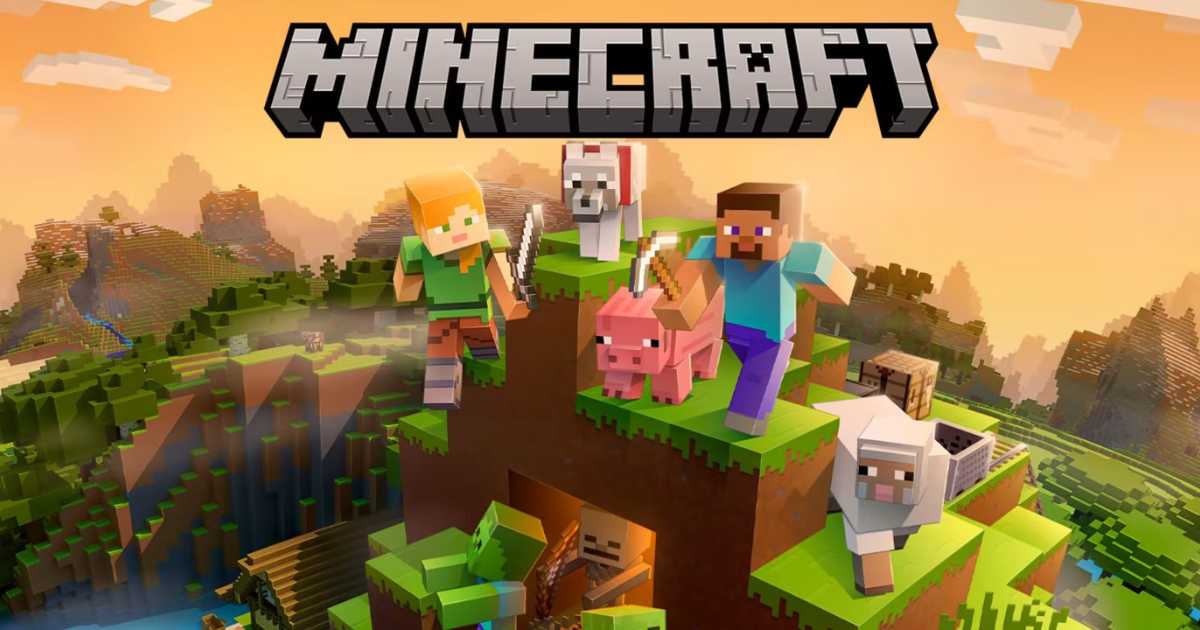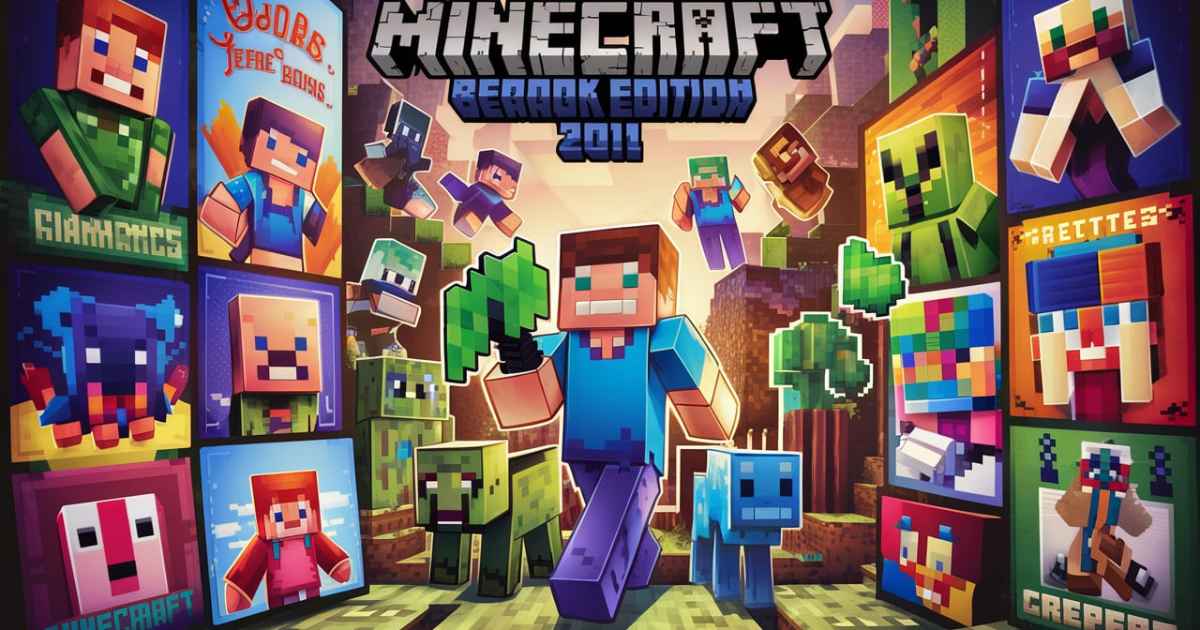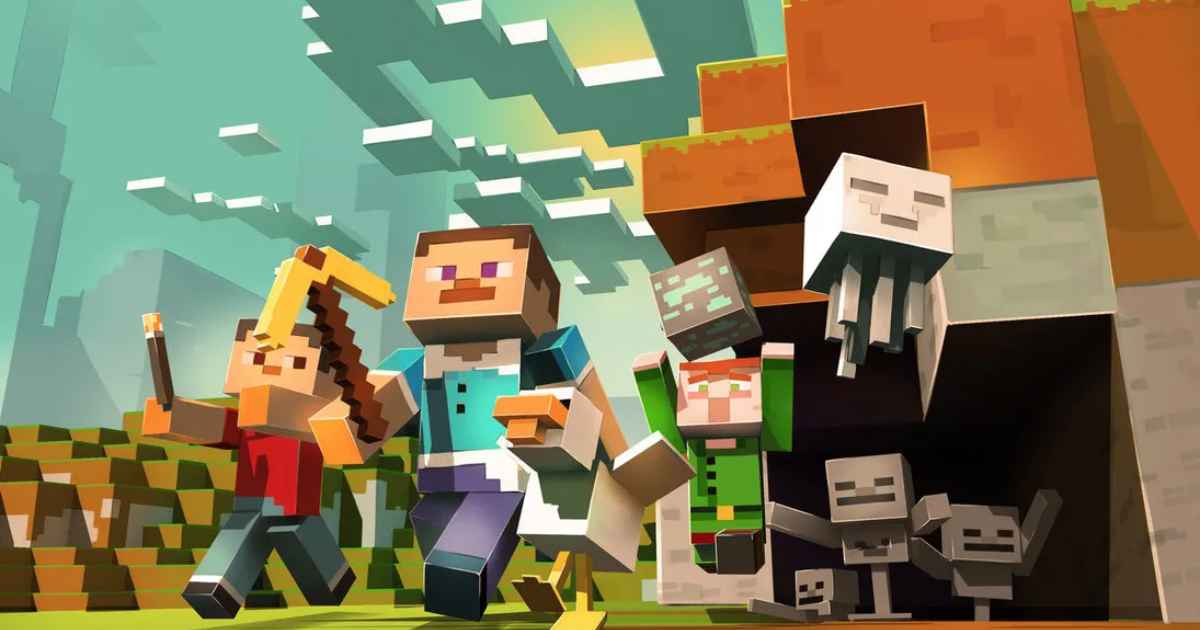Minecraft Bedrock Edition is a cross platform version of the popular sandbox game. It was first released in 2011 as Pocket Edition for mobile devices. Over the years, it has expanded to consoles and Windows 10, offering a unified experience across various platforms. Bedrock Edition is known for its accessibility, multiplayer capabilities, and regular updates.
“From Blocks to Banners: The Visual Evolution of Minecraft Bedrock Edition (2011 2024)” tells a captivating story of artistic growth. It’s a journey that mirrors the game’s own expansion from a simple mobile app to a global phenomenon. This visual transformation reflects Minecraft’s ability to adapt and innovate while staying true to its core identity. It’s a testament to the game’s enduring appeal and its impact on gaming culture.
Bedrock Edition has become a cornerstone of the Minecraft franchise. It boasts features like cross platform play, allowing friends to build together regardless of their device. The edition receives frequent updates, introducing new biomes, mobs, and mechanics. Its marketplace offers a wide range of community created content. Bedrock Edition continues to evolve, keeping millions of players engaged in its blocky, creative world.
Introduction: The Significance of Visual Identity in Gaming
When you browse through a digital storefront or flip through a gaming magazine, what catches your eye first? It’s often the iconic imagery associated with each game. In the realm of gaming, visual identity isn’t just window dressing it’s the first handshake between a game and its potential players. For Minecraft: Bedrock Edition, this handshake has evolved from a simple pixelated grass block to a rich tapestry of visual storytelling.
Walking into a virtual world where everything is made of blocks, yet possibilities are endless. That’s the promise Minecraft’s visual identity makes, and it’s a promise that has captivated gamers for over a decade. The game’s icons and banners have become more than mere marketing tools; they’re portals into a world of creativity and adventure.
Early Beginnings: 2011 2015
Cast your mind back to 2011. Smartphones were just beginning to reshape our digital landscape, and into this brave new world stepped Minecraft: Pocket Edition the precursor to what we now know as Bedrock Edition. The game’s first icon was a humble grass block, a perfect encapsulation of Minecraft’s core concept: a world built block by block.
This simplicity wasn’t just a design choice; it was a reflection of Minecraft’s indie roots. In a market dominated by flashy graphics and complex designs, Minecraft dared to be different. Its blocky, pixelated aesthetic stood out like a charming anachronism, harking back to the early days of gaming while simultaneously pushing the boundaries of what games could be.
Establishing a Visual Identity: 2012 2015
As Minecraft expanded beyond PCs to mobile platforms, its visual identity needed to evolve. The challenge was clear: how do you maintain the game’s iconic look while adapting to the smaller screens of smartphones and tablets? The solution came in the form of refined textures and the introduction of characters like Steve into the game’s imagery.
This period saw Minecraft’s banners begin to showcase the diverse environments players could explore. From lush forests to barren deserts, these banners were a promise of adventure, inviting players to step into a world limited only by their imagination.
Read This Blog:
THE ULTIMATE GUIDE TO CAR INSURANCE IN CLOVIS OTOSIGNA
Cross Platform Expansion and Visual Refinement: 2014 2015

The years 2014 and 2015 marked Minecraft’s conquest of console gaming. As the game leaped onto Xbox and PlayStation, its visual identity needed to make a similar leap. The goal was to create a unified look that would be instantly recognizable whether you were playing on a phone, a console, or a PC.
This era saw Minecraft’s banners shift focus to highlight the game’s growing multiplayer aspect. Images of players working together to build massive structures or explore treacherous caves became common, emphasizing the social heart of Minecraft.
Modernization and Professionalism: 2016 2018
The introduction of the Bedrock Engine in 2016 was a game changer for Minecraft, unifying different versions under a single codebase. This technological leap was mirrored in the game’s visual identity. Icons began to incorporate 3D elements, adding depth and sophistication to the once flat designs.
Banners from this period often depicted players from different platforms interacting in the same world, a visual representation of Minecraft’s new cross platform capabilities. It was a powerful message: no matter what device you owned, you could be part of the Minecraft community.
Current Trends in Minecraft: Bedrock Edition
Since 2019, Minecraft Bedrock Edition has had big updates that made the game better and changed how it looks. The game’s icons and banners have changed a lot too. Let’s look at how Minecraft’s visual style has evolved with each major update.
2019: The Village & Pillage Update
The Village & Pillage update breathed new life into Minecraft’s world, and its visual identity reflected this. Game icons began to incorporate elements of village life, while banners dramatically portrayed the conflict between villagers and the new pillager mobs. These visuals told a story of a world that was becoming more complex and dangerous, yet still retained Minecraft’s signature charm.
2020: The Nether Update
2020’s Nether Update was a fiery reimagining of Minecraft’s underworld, and its visual identity followed suit. The game’s imagery took on a more ominous tone, with deep reds and otherworldly blues dominating the color palette. This update also saw the introduction of animated banners, bringing an extra layer of dynamism to Minecraft’s visual storytelling.
2021: The Caves & Cliffs Update
The Caves & Cliffs update was all about vertical expansion, and Minecraft’s visuals rose to the challenge. Icons and banners began to showcase towering mountains and deep, intricate cave systems. New mobs like the axolotl and the fearsome Warden found their way into the game’s imagery, hinting at the wonders and dangers awaiting players.
2022: The Wild Update
With the Wild Update, Minecraft’s visual identity took a turn towards the natural world. The introduction of the Deep Dark and Mangrove Swamps was reflected in moody, atmospheric visuals that balanced beauty with an undercurrent of danger. These images invited players to explore Minecraft’s world with fresh eyes, promising new biomes teeming with life and mystery.
2023 2024: Community Centric Updates and Collaborative Events
In recent years, Minecraft’s visual identity has increasingly focused on its vibrant community. Banners now often showcase player creations, from intricate redstone contraptions to sprawling cities. Global Minecraft events and collaborations are visually celebrated, reinforcing the game’s status as a platform for creativity and cooperation.
Visual Storytelling: Capturing Minecraft’s Essence

Minecraft’s journey from a simple block to a rich, narrative driven world is mirrored in its visual evolution. Each icon and banner tells a story, inviting players to imagine the adventures that await them. The challenge for Minecraft’s visual designers has been to balance nostalgia with innovation, maintaining the game’s iconic look while continually pushing it forward.
Behind the Scenes: The Art of Designing Minecraft’s Visual Elements
Creating Minecraft’s visual identity is no small feat. It involves a collaborative process that brings together artists, designers, and community feedback. The challenge lies in maintaining a consistent style across various platforms while still allowing room for innovation.
One of the most interesting aspects of this process is how the Minecraft team draws inspiration from the community. Player creations often inspire official designs, creating a feedback loop that keeps the game’s visuals fresh and relevant.
The Future of Minecraft’s Visual Identity

As we look to the future, the possibilities for Minecraft’s visual evolution seem endless. With the rise of technologies like virtual and augmented reality, we might see Minecraft’s icons and banners take on new, immersive forms. Imagine a Minecraft icon that you could step into, or a banner that comes to life in your living room!
Artificial intelligence could also play a role in shaping Minecraft’s future look. AI generated landscapes or mob designs could find their way into the game’s visual identity, offering an ever changing feast for the eyes.
Frequently Asked Questions (FAQs) About Minecraft Bedrock Edition Game Icons and Banners
What are game icons and banners in Minecraft’s Bedrock Edition?
Game icons are the visual representations of Minecraft that appear on your device’s home screen or in digital storefronts. Banners, on the other hand, are promotional images used to showcase updates, events, or features within the game.
How have Minecraft’s game icons evolved over the years?
Minecraft’s icons have evolved from a simple grass block to more complex designs incorporating multiple elements from the game. They’ve become more detailed and sophisticated while still maintaining Minecraft’s distinctive blocky style.
What role do banners play in Minecraft’s Bedrock Edition updates?
Banners serve as visual announcements for new features, biomes, or gameplay mechanics. They’re designed to generate excitement and give players a glimpse of what to expect from upcoming updates.
How do animated banners enhance the Minecraft experience?
Animated banners, introduced in recent years, add an extra layer of dynamism to Minecraft’s visual storytelling. They can showcase gameplay mechanics in action or bring Minecraft’s world to life in ways static images can’t.
Why are community centric banners important in Minecraft?
Community centric banners celebrate player creativity and reinforce Minecraft’s status as a platform for collaboration. They help foster a sense of belonging among players and showcase the diverse ways people engage with the game.
How does Minecraft’s visual identity through icons and banners contribute to its overall success?
Minecraft’s visual identity helps maintain brand recognition and loyalty among players. It also plays a crucial role in attracting new players by showcasing the game’s evolving content and unique aesthetic.
Where can players find the latest information about Minecraft updates and banners?
Players can find the latest information on official Minecraft channels, including the game’s website, social media accounts, and in the game news section.

I am a content writer with three years of experience, specializing in general world topics. I share my insights and knowledge on my personal blog, “generalcrunch.com”, providing informative content for my readers.